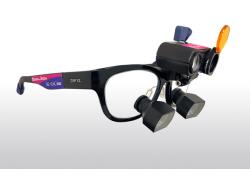- About Us
- Advertise
- Editorial
- Contact Us
- Terms and Conditions
- Privacy Policy
- Do Not Sell My Personal Information
© 2025 MJH Life Sciences™ and Dental Products Report. All rights reserved.
Study finds children of stressed mothers are more likely to develop cavities
Pregnancy is stressful enough without having to worry about a child’s future dental health. But, researchers now say, mothers may need to be thinking about just that.
Pregnancy is stressful enough without having to worry about a child’s future dental health. But, researchers now say, mothers may need to be thinking about just that.
For the first time, chronic maternal stress (measured by biological markers) has been found to be associated with a higher prevalence of cavities among children, according to a study by King’s College London and University of Washington. Chronic stress was also found to be linked to lower probabilities of breast feeding and dental visits by children, according to the research.
Researchers analyzed data from 716 maternal-child pairs in the United States, with children aged two to six years and mothers who were on average 30± six years of age, taken from the Third National Health and Nutrition Examination Survey (1988 – 1994).
Researchers found that dental cavities were more common among children whose mother had two or more biological markers of chronic stress, an incident known as allostatic load (AL), compared to no markers of AL. Additional analysis tested the association between maternal AL and care-taking behaviors, such as breast feeding, dental visits and eating breakfast daily.
They identified that dental cavities were more common among children whose mother did not breastfeed them, than those who did. Mothers who had one and two or more markers of AL were significantly less likely to breastfeed than those with a normal AL level.
The study also considered the role of socioeconomic status in the relationships. Several studies have established a persistent association between socioeconomic status (SES) – and dental cavities, but few have also evaluated one possible pathway – that of maternal stress. When SES was considered in the analysis, the significant relationship between AL and child cavities decreased; as expected considering the established relationships between SES and both maternal AL and child cavities.
“Policy that aims to improve dental health, particularly the prevalence of cavities among children, should include interventions to improve the quality of life of mothers,” said Dr Wael Sabbah, co-author from the Dental Institute at King’s College London. “Chronic maternal stress as a potential risk factor is something we need to consider, in addition to the wider implications of maternal wellbeing, social, and psychological environment on dental health.”
Dr Sabbah added, “Our study indicated that mothers with lower income were significantly less likely to breastfeed or to have taken their child to the dentist in the prior year. They were also less likely to feed their child breakfast than higher income counterparts. It is important to better understand the dynamics of these links, so that we might develop effective public health programs and interventions.’
This was not the first study to associate maternal exposure to stress and child cavities, but it is the first study to examine the relationship using biological markers: serum triglycerides; serum HDL cholesterol; plasma glucose; serum C-reactive protein; systolic or diastolic blood pressure; and waist circumference.
Erin E. Masterson, first author from the Schools of Public Health and Dentistry at the University of Washington, commented, “We know that low socioeconomic status is associated with chronic exposure to adverse living circumstances. These take a toll on a person biologically and also affect behavior. This study uniquely highlights the importance of considering the influence of socioeconomic status and maternal stress on children’s oral health through mothers’ struggles to adopt healthy patterns that are major predictors of dental cavities, such as brushing her children’s teeth regularly, maintaining healthy dietary habits and taking regular visits to the dentist for preventive care.”
The sample was mostly comprised of children whose parents described them as being of Mexican-American or non-Hispanic black race/ethnicity. Interestingly, non-Hispanic black mothers were significantly less likely to breastfeed that non-Hispanic white mothers. Children of Mexican-American mothers were significantly less likely to have visited the dentist in the prior year than their non-Hispanic white counterparts.
The authors caution that the observed associations do not indicate causality. They further added that whilst the data is relatively old, the public availability of the file that links mother and child data allowed for a unique opportunity to analyze the mother-child pairs from a large US study sample.
The study, “Maternal allocastic load, caretaking behaviors and child dental caries experience: A cross-sectional evaluation of linked mother-child data from the third National Health and Nutrition Examination Survey,” was published in the American Journal of Public Health.
Related Content:



